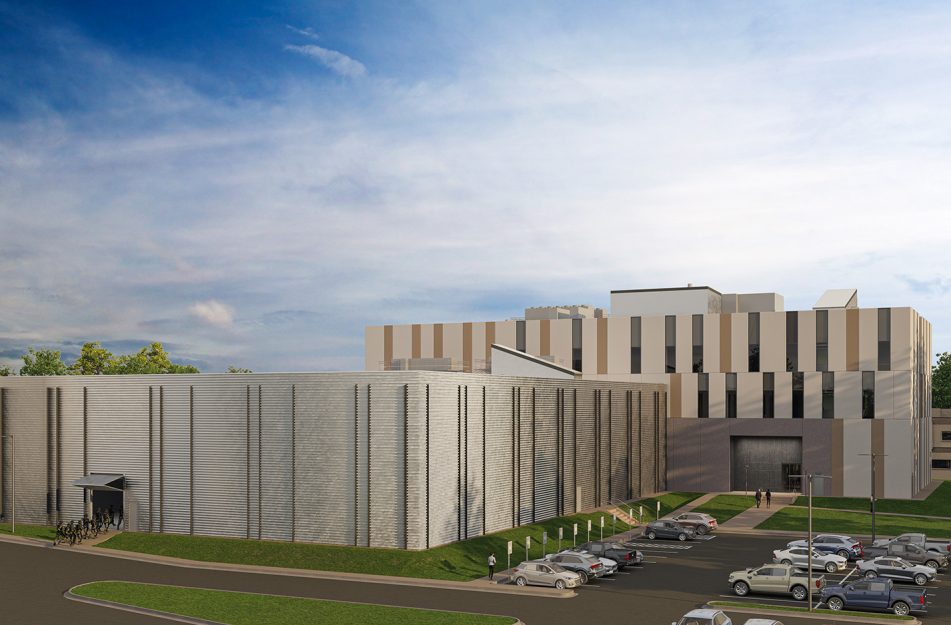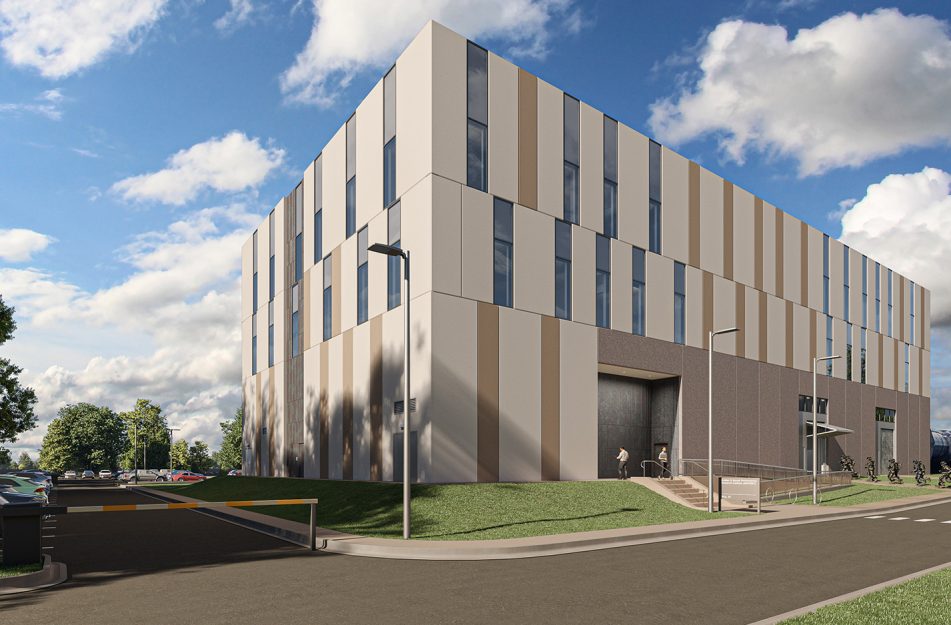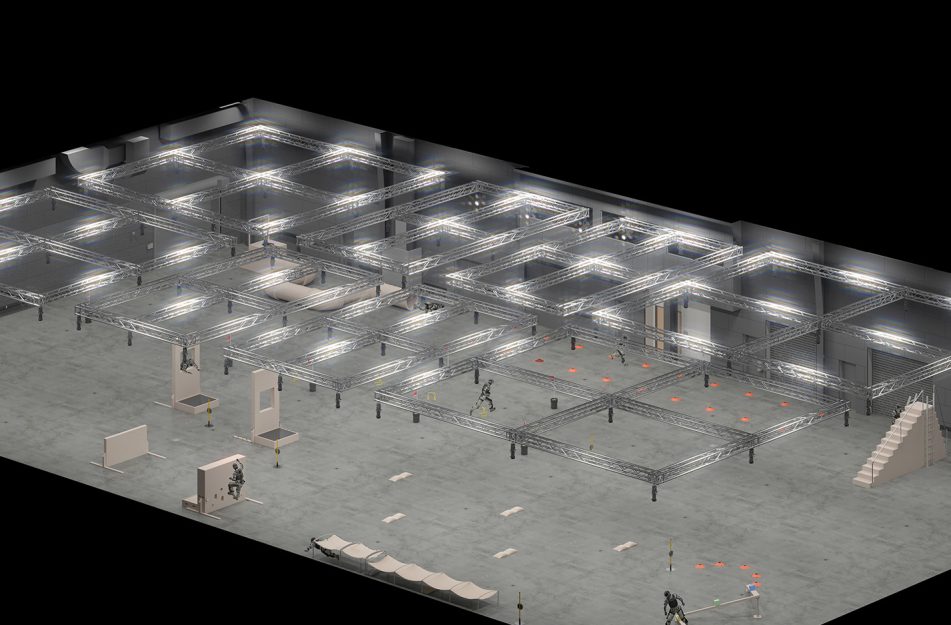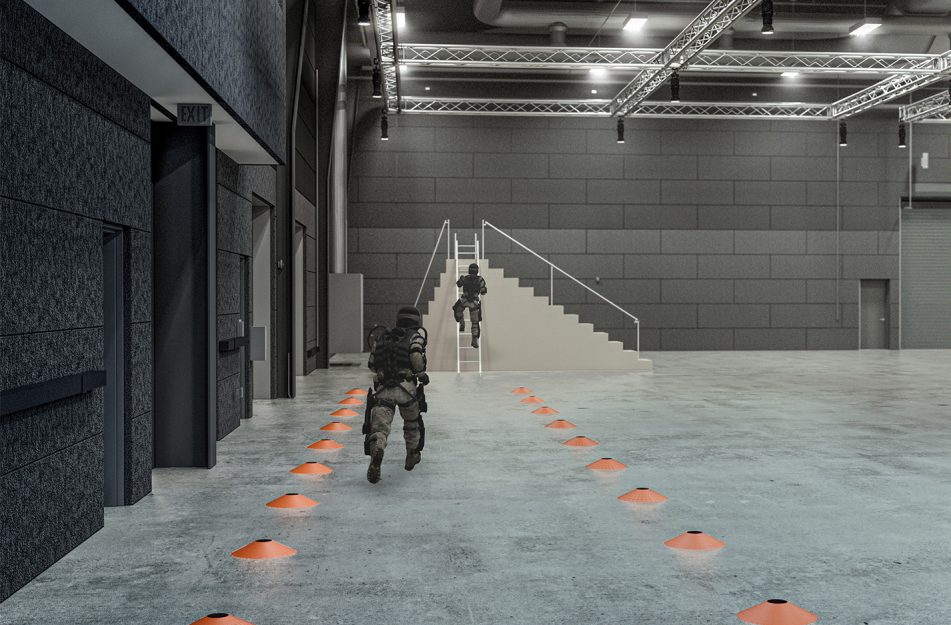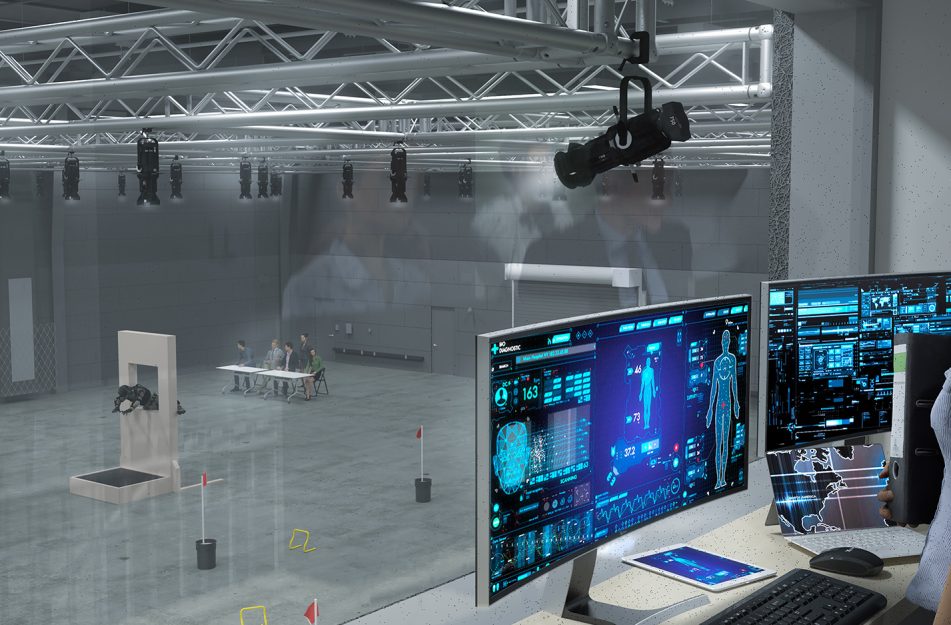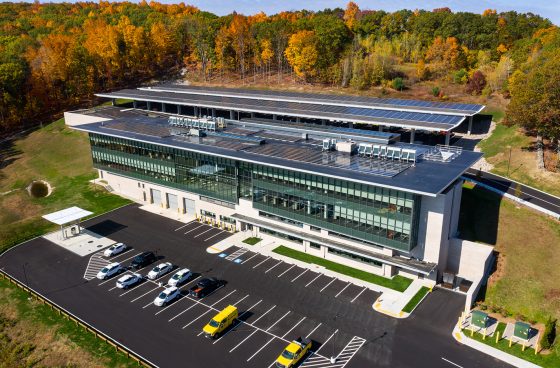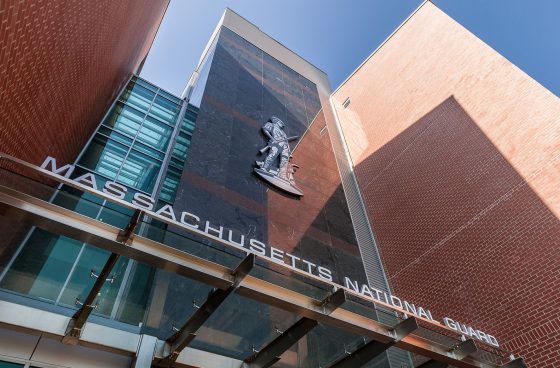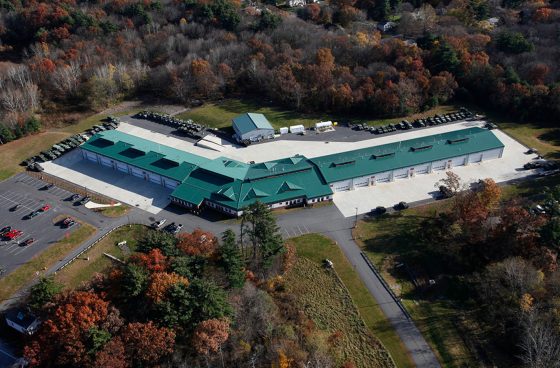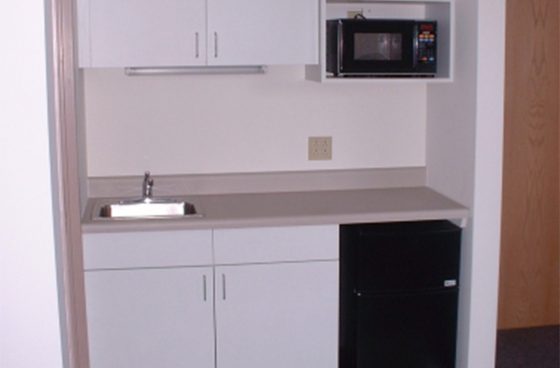This project is construction of a new building to house the USARIEM and CCDC research labs, administrative areas and support spaces on Natick Soldier Systems Center, Natick, Massachusetts. The new building is comprised of a three-story structure with an adjoining long-span high-bay single-story structure that includes a mezzanine. This project must be compliant with UFC 4-010-01 Antiterrorism Standards. The project is pursuing LEEDv4 Silver Certification. The three-story structure encloses approximately 80,600 SF and has a 26 FT floor-to-floor height to accommodate large labs on the first floor, 16 FT floor-to-floor height and an 18 FT floor-to-floor height on the third floor above.
The majority of the three-story building enclosure consists of a composite insulated reinforced architectural precast concrete panel system with limited areas comprised of dimensional slate panel rain screen assemblies over reinforced concrete panel or masonry backup walls. The three-story portion of the building includes the two main entrances, two stair towers, one heavy duty elevator, open administrative areas, offices, lab spaces, training and conference rooms, and toilet and locker rooms. The adjoining single-story building is a pre-engineered long-span metal building enclosing an 18,000 SF open high-bay lab, a 4,320 SF single-story area that includes circulation and support spaces on its southern perimeter and an 800 SF mezzanine area served by a communicating stair and elevator for access to an observation area and control room that overlooks the large bay lab.
The ground level of building includes several pits of different depths in various high-bay labs to accommodate equipment that is to be flush with the surrounding floor. A passive vapor mitigation system is to be installed beneath the floor slab. There is one central heating and cooling system that serves the majority of the facility and there are several independent units that serve spaces with higher loads.
